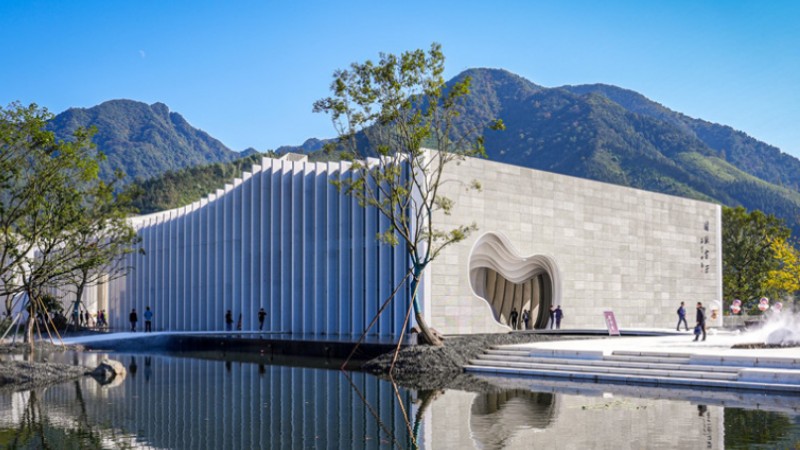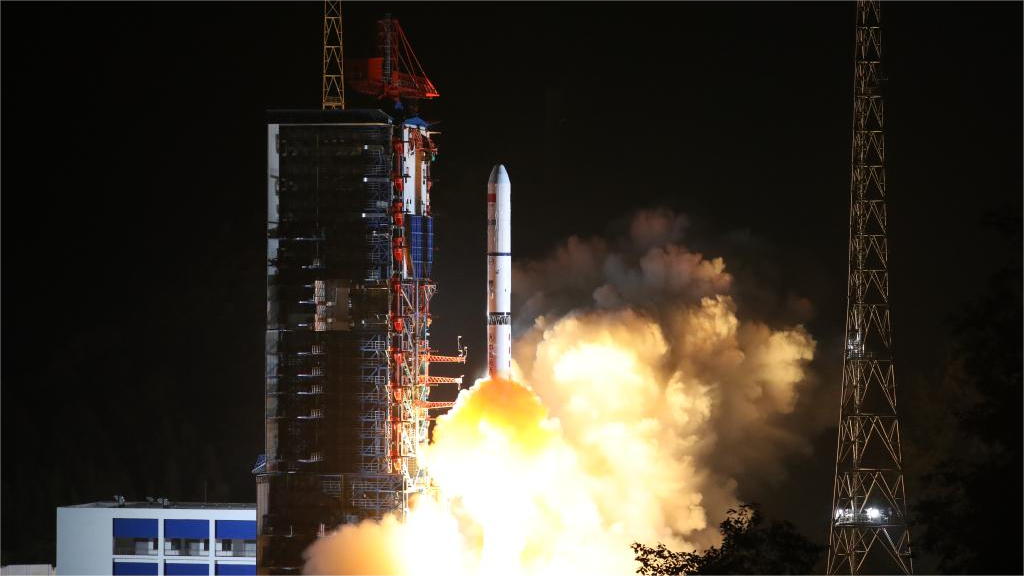Archaeological findings unveil multicultural exchanges tapestry in ancient China
XI'AN, Oct. 25 (Xinhua) -- Recent archaeological excavations across China have revealed an array of artifacts that shed light on the extensive multicultural interactions in the country's ancient history.
These findings, presenting a mosaic of diversified cultural elements, were a focal point at the 4th Congress of Chinese Archaeology held in Xi'an in northwest China's Shaanxi Province from Monday to Wednesday.
At the event, researchers from the Shaanxi Academy of Archaeology shared insights into the latest discoveries in tombs of the Western Han Dynasty (202 B.C.-25 A.D.). Notably, in a royal mausoleum hundreds of gold artifacts adorned with grassland-related motifs were unearthed.
"These artifacts underscore the pre-Silk Road interactions between the central plain areas of China and the grassland areas, serving as direct evidence of cultural exchanges during the pre-Qin Dynasty (221 B.C.-207 B.C.) and Han Dynasty (202 B.C.-220 A.D.) periods," said Ma Yongying, a researcher at the Shaanxi Academy of Archaeology.
This intricate interplay of diverse cultures is a consistent theme throughout China's historical tapestry, archaeologists noted.
Wang Ying, associate researcher at the Institute of Archaeology, Chinese Academy of Social Sciences, said that the Shangjing site, dating back to the Liao Dynasty (907-1125), presents a reflection of nomadic Khitan customs alongside the adoption of central plains traditions.
Shangjing, the former imperial city of the Liao Dynasty, though facing east -- reflecting the Khitan people's distinct custom of "revering the east" -- primarily adopts a layout of multiple concentric enclosures and axial symmetry, which is an architectural style commonly found in the central plain areas.
Revelations at the site of Chang'an city dating back to the Tang Dynasty (618-907) include high-nosed, deep-eyed figurines with thick beards, indicating the diverse ethnicities back then and hinting at historical ties between China and regions in Central and Western Asia.
In recent years, the archaeological community in China has continuously achieved new discoveries that shed light on multicultural exchanges.
One such site in Shangyi, north China's Hebei Province, known as the Sitai relics site, testifies to some of the earliest village settlements in northern China. Remarkably, pottery found there shares stylistic similarities with artifacts from the Lake Baikal region in Russia, indicating past interactions with distant northern cultures.
The 2021 excavations at Ta'erpo Village in the city of Xianyang, Shaanxi, have also drawn attention, with 47 sets of gold, bronze, and pottery objects discovered.
"The gold ornaments, featuring gold beads welded with gold wire, reflect early contact between the Qin people and Central and Western Asia. These are critical to exploring pre-Silk Road intercultural communications," said Sun Zhouyong, head of the Shaanxi Academy of Archaeology.
In Xinjiang's Qitai County, archaeologists have discovered the ruins of an ancient Romanesque bathhouse with a "heated floor" system within the Tangchaodun ancient city, which was first built in the early Tang Dynasty. The ruins, aside from its distinctive Romanesque layout, integrate traditional Chinese wall paintings, showcasing a blend of local and foreign artistry.
At the conference, archaeologists noted that key archaeological projects undertaken in recent years have reconstructed the interactions within various regions of China and with cultures beyond, reiterating the inclusiveness and continuity of Chinese civilization.
"We aim to let the ancient relics 'speak,' showcasing through our archaeological work the tangible evidence and examples of cultural fusion in China's history," Wang said.
Photos
Related Stories
- 4th Congress of Chinese Archaeology kicks off in Xi'an, NW China
- Ancient weapon storehouse ruins discovered along China's Great Wall
- Tomb dating back over 2,000 years discovered in south China
- 244-million-year ancient fish fossil discovered in Yunnan
- Archaeologists call for deeper intl cooperation
- Excavation of Majiayuan site underway in Gansu
Copyright © 2023 People's Daily Online. All Rights Reserved.









